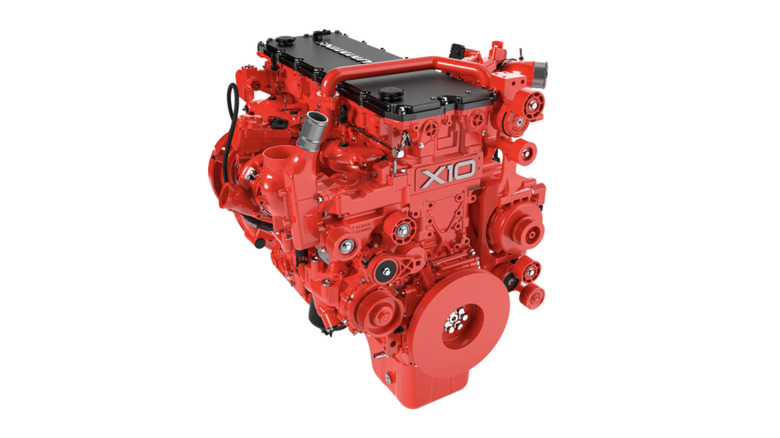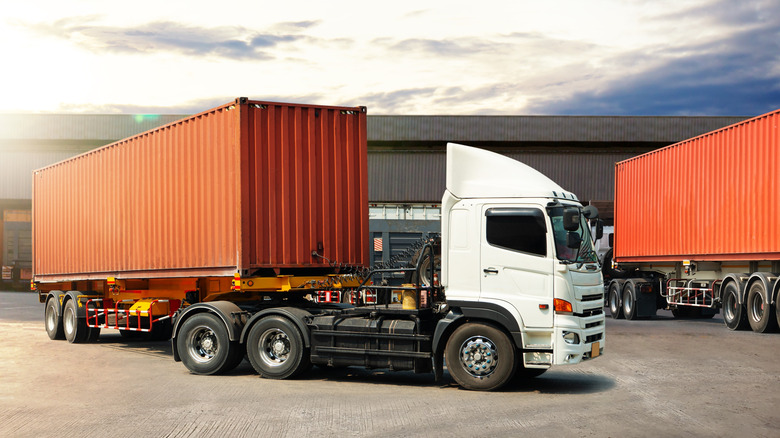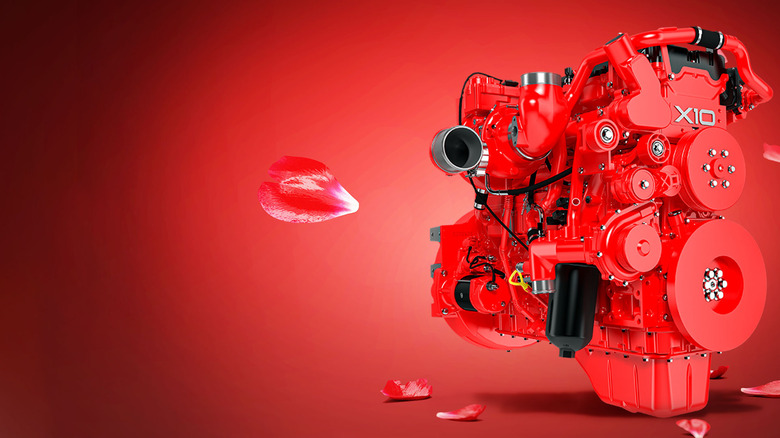How Much Horsepower & Torque Does The Cummins X10 Produce?
In 2023, Cummins' medium and heavy-duty powertrain lineup underwent a significant change when the company unveiled its brand-new X10 diesel engine. Positioned to replace the L9 and X12 engines, the X10 is meant to be flexible and capable of handling a broad spectrum of on-road and vocational uses. One of its strongest selling features? An outstanding balance of horsepower, torque, and efficiency, meeting the needs of modern fleets while also aligning with Cummins' future-oriented HELM (High Efficiency, Low Emissions, Multiple Fuels) approach.
So, how much power does it really generate? Based on Cummins' official specs, depending on configuration, the X10 diesel engine generates between 320 and 450 horsepower and up to 1,650 lb-ft of torque. That range guarantees the engine can provide the grunt required for heavy-duty use as well as medium-duty roles. For example, customers can expect outputs on the lower end of the scale in transit applications, whereas the X10's higher output configurations will help vocational or long-haul trucks without needing Cummins's larger engines.
By ensuring the X10 meets EPA 2027 emissions criteria, Cummins has also future-proofed it. Its performance numbers tell only one side of the story in a market shaped by regulatory needs and fuel diversity. Its adaptability is the true worth, particularly for fleets trying to meet tomorrow's clean energy needs with today's diesel consumption.
Engine specifications for a wide spectrum of uses
The Cummins X10's horsepower and torque figures reflect a deliberate engineering approach to support a broad range of uses; they're not just marketing numbers. In medium-duty uses like delivery trucks or transit buses, for instance, the X10 is usually tuned to provide 1,000 to 1,250 lb-ft of torque and 320 to 380 horsepower. This mix gives enough power to negotiate stop-and-go urban driving while still prioritizing fuel economy and emissions.
In heavy-duty uses, including dump trucks, vocational rigs, or regional haul tractors, the engine can be tuned to 450 horsepower and a whopping 1,650 lb-ft of torque. Cummins has managed to achieve these numbers while keeping the X10 to a smaller physical footprint and lighter weight, thus providing efficiency without sacrificing performance and letting it compete directly with the 13-liter class engines.
Cummins Inc. has also considered modularity when building the X10. It shares its architecture with the smaller B6.7 engines and the bigger X15 engines, which simplifies fleet maintenance and part procurement. For operators moving between engine platforms, this commonality also translates into more seamless transitions — a major benefit for fleet managers trying to standardize equipment without sacrificing adaptability.
Designed withe future in mind
The Cummins X10 marks progress in engine adaptability and emissions compliance, moving beyond only raw power and torque. Depending on the cylinder head and fuel system arrangement, the X10 is built to run on several fuel types —including diesel, hydrogen, and finally natural gas — part of Cummins' HELM platform. Although the present X10 diesel is the first variant on the market, as the market develops, the platform is ready for the acceptance of other fuels.
This makes the X10 more than just a conventional engine update; it's a transitional product meant to meet diesel demand today with zero-emission requirements tomorrow. Growing regulatory pressure from the EPA and California's Air Resources Board (CARB) is driving fleet operators to choose greener powertrains. The X10 presents a unique pathway that doesn't require a total overhaul of the current engine or the need to compromise its performance.
Cummins' new engine is essentially a workhorse as much as a compliance tool. The X10 keeps an eye on tomorrow's carbon footprint while meeting today's job site needs with great torque output and flexible horsepower across the board. The Cummins X10 finds a much-needed sweet spot for fleets that must be ready for a low-emissions future but cannot yet go all-in on electrification.


